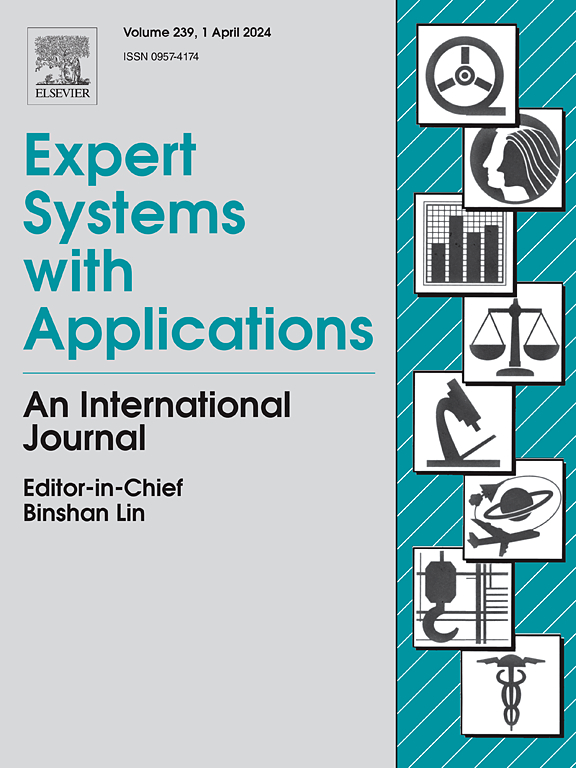直觉模糊数综合模糊决策方法:在临床实验室备灾中的应用
IF 7.5
1区 计算机科学
Q1 COMPUTER SCIENCE, ARTIFICIAL INTELLIGENCE
引用次数: 0
摘要
由于季节性呼吸道疾病 (SRD) 的发生频率和严重程度不断增加,社会时刻处于警戒状态,这从人道主义和公共卫生的角度都提出了严峻的挑战。最近的 COVID-19 大流行考验了临床实验室应对季节性感染、流行病爆发和重大突发事件的能力。这种情况导致了业务负担,主要原因是资源有限、缺乏前瞻性规划以及对意外情况的适应能力较低。考虑到多标准加权、相互依存性评估和排序,将不同的数据驱动方法结合起来,对于设计有效的干预措施、提升 SRD 期间临床实验室的可操作性至关重要。然而,深入的文献综述显示,目前还没有研究使用这些混合方法来解决这一问题。因此,本文提出了一种创新的混合多标准决策(MCDM)方法,将直觉模糊层次分析法(IF-AHP)、直觉模糊决策试验与评估实验室(IF-DEMATEL)和组合折衷方案(CoCoSo)整合在一起,用于评估 SRD 期间临床实验室的备灾能力。考虑到决策过程中固有的犹豫性和不确定性,我们首先应用 IF-AHP 为标准和次级标准分配相对权重。随后,利用 IF-DEMATEL 分析标准之间的相互关系,从而深入了解临床实验室灾难管理驱动因素之间的相互关系。最后,采用 CoCoSo 方法估算每个实验室的准备指数 (PI),并检测应对 SRD 时的响应差距。在最近的呼吸道传染病大流行期间,哥伦比亚的九家临床实验室对所建议的方法进行了验证。这项研究通过确定影响临床实验室响应的关键标准和次级标准、激发临床实验室在面对 SRD 时的主要响应动力,以及计算代表实验室准备情况的多维指标,为医疗保健部门做出了贡献。这项工作还将 IF-AHP、IF-DEMATEL 和 CoCoSo 方法应用于一项需要多种方法数据驱动应用的挑战性案例研究,从而丰富了相关文献。此外,它还提出了在其他相关情况下改进拟议框架的未来方向。本文章由计算机程序翻译,如有差异,请以英文原文为准。
Integrated fuzzy decision-making methodology with intuitionistic fuzzy numbers: An application for disaster preparedness in clinical laboratories
Society is on constant alert due to the increasing frequency and severity of Seasonal Respiratory Diseases (SRDs), posing significant challenges from both a humanitarian and public health perspective. The recent COVID-19 pandemic has tested the capacity of clinical laboratories to address seasonal infections, epidemic outbreaks, and critical emergencies. This scenario has led to operational burdens, primarily from resource limitations, a lack of proactive planning, and the low adaptation to unforeseen circumstances. Coupling different data-driven approaches considering multi-criteria weighting, interdependence assessment, and outranking are critical for devising effective interventions upgrading the operability of clinical labs during SRDs. Nonetheless, a deep literature review revealed there are no studies using these hybridized approaches when addressing this problem. Consequently, this article proposes the application of an innovative hybrid Multicriteria Decision-Making (MCDM) methodology that integrates the Intuitionistic Fuzzy Analytic Hierarchy Process (IF-AHP), Intuitionistic Fuzzy Decision Making Trial and Evaluation Laboratory (IF-DEMATEL), and Combined Compromise Solution (CoCoSo) to assess the disaster preparedness of clinical laboratories during SRDs. Initially, we applied IF-AHP to assign the relative weights to criteria and sub-criteria, considering the inherent hesitation and uncertainty in decision-making. Subsequently, IF-DEMATEL was utilized to analyze the interrelationships between criteria, providing insights into the interrelations among clinical lab disaster management drivers. Finally, the CoCoSo method was applied to estimate each lab’s Preparedness Index (PI) and detect response gaps when coping with SRDs. The suggested methodology was validated across nine clinical laboratories in Colombia during the most recent respiratory pandemic. This study contributes to the healthcare sector authorities by identifying key criteria and sub-criteria affecting the response of clinical labs, the elicitation of main response drivers in clinical labs when facing SRDs, and the calculation of a multidimensional indicator representing the preparedness of the labs. This work also enriches the literature by applying the IF-AHP, IF-DEMATEL, and CoCoSo approach to a challenging case study requiring a multi-method data-driven application. Furthermore, it suggests future directions to improve the proposed framework in other related contexts.
求助全文
通过发布文献求助,成功后即可免费获取论文全文。
去求助
来源期刊

Expert Systems with Applications
工程技术-工程:电子与电气
CiteScore
13.80
自引率
10.60%
发文量
2045
审稿时长
8.7 months
期刊介绍:
Expert Systems With Applications is an international journal dedicated to the exchange of information on expert and intelligent systems used globally in industry, government, and universities. The journal emphasizes original papers covering the design, development, testing, implementation, and management of these systems, offering practical guidelines. It spans various sectors such as finance, engineering, marketing, law, project management, information management, medicine, and more. The journal also welcomes papers on multi-agent systems, knowledge management, neural networks, knowledge discovery, data mining, and other related areas, excluding applications to military/defense systems.
 求助内容:
求助内容: 应助结果提醒方式:
应助结果提醒方式:


